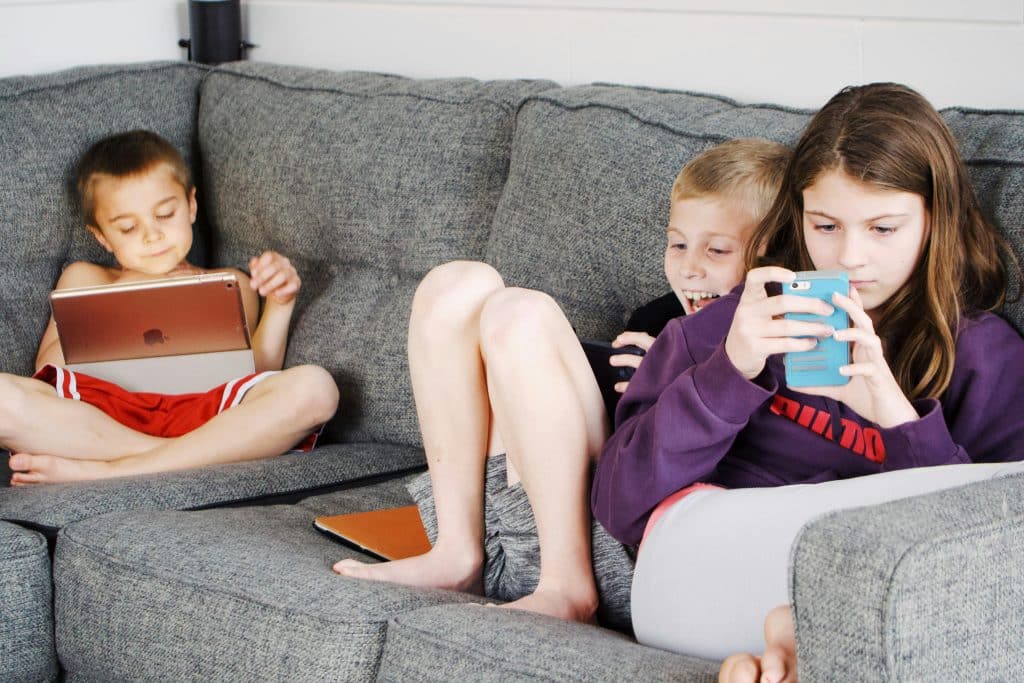As a practitioner who works closely with kids, I know firsthand how challenging it can be for parents to navigate the ever-evolving world of technology and screen time. With the abundance of devices and digital content available, it’s natural to wonder what screen time is appropriate for your child. In this blog post, I’ll share some guidelines and tips to help you make informed decisions about your child’s screen time based on their age.
Table of Contents
What is Screen Time?
Screen time refers to the amount of time spent using digital devices with screens, such as smartphones, tablets, computers, televisions, and video game consoles. It encompasses both educational and recreational activities, including watching videos, playing games, browsing the internet, and using social media.
While digital devices offer countless opportunities for learning, entertainment, and communication, excessive screen time can have negative impacts on children’s physical, social, and emotional development. It’s crucial for parents and caregivers to understand and adhere to the recommended screen time guidelines based on their child’s age.

Read more: Should Parents Limit Screen Time?
The Importance of Setting Screen Time Limits
I’ve seen firsthand how excessive screen time can impact a child’s development. A study published in JAMA Pediatrics found that greater screen time at ages 2 and 3 was associated with poorer performance on developmental screening tests at ages 3 and 5. The researchers suggest that screen time may replace important learning opportunities and impede social interaction.
However, not all screen time is created equal. Educational content and apps that encourage interaction can be beneficial in moderation. The key is finding the right balance and being mindful of your child’s overall media consumption.
Screen Time Recommendations by Age
Let’s take a closer look at the recommended screen time by age and what types of media are most appropriate for each developmental stage:
| Age | Recommended Screen Time | Appropriate Media |
|---|---|---|
| Under 18 months | None, except video-chatting | N/A |
| 18-24 months | High-quality programming with caregiver | Educational shows, apps that encourage interaction |
| 2-5 years | 1 hour per day | High-quality, educational programming |
| 6+ years | Consistent limits, based on individual needs | Age-appropriate, educational media; family-friendly entertainment |
Tips for Managing Screen Time
So, how can you effectively manage your child’s screen time? Here are some tips I’ve found helpful:
- Set clear boundaries: Establish daily or weekly screen time limits and stick to them.
- Create a family media plan: Decide together what media is appropriate and when it can be consumed.
- Encourage other activities: Provide alternatives to screen time, such as outdoor play, reading, or creative projects.
- Be a good role model: Model healthy screen habits by limiting your own media consumption.
- Make screen time a shared experience: Watch and play together, using media as a tool for bonding and learning.
Managing screen time can be a challenge, but by following these age-based guidelines and tips, you can help your child develop a healthy relationship with technology.
Adapting Screen Time for Neurodivergent Kids
For children with thinking and learning differences, such as autism or ADHD, screen time can be a valuable tool for learning, communication, and stress relief. Many apps and games are specifically designed to support skill development and provide a sense of control and predictability that neurodivergent kids may crave.
However, it’s still important to monitor screen time and ensure it doesn’t interfere with other essential activities. Work closely with your child’s healthcare providers and educators to determine an appropriate balance and identify content that aligns with their unique needs and goals.

Read more: 5 Reasons Why Healthy Screen Time Is Good
Setting Boundaries and Leading by Example
Establishing clear boundaries around screen time is crucial for kids of all ages. Create a family media plan that outlines when, where, and how devices can be used. Consider implementing screen-free zones, such as the dinner table or bedrooms, and encourage alternative activities like outdoor play, reading, or family game nights.
As a parent, it’s also essential to model healthy digital habits. Children often imitate the adults in their lives, so be mindful of your own screen time and prioritize face-to-face interactions. When you do use devices around your kids, talk to them about what you’re doing and why. This can help them develop a more balanced, intentional relationship with technology.
Goally | Fun Games that Build Motor Skills & Manage Screen Time
Looking for ways to improve your child’s finger dexterity skills while also keeping screen time manageable? Try Goally’s skill building tablet for kids— it has a bunch of fun & motor planning games!
Our “Balloons” & Graffiti Street Apps are all about building motor skills in a fun, interactive way. Kids learn to “pop the balloons” or draw dozens of digital art designs while simultaneously developing the essential skills needed to use AAC and other communication tools. It’s a blast for them and a win for you!
Navigating the world of screen time can feel overwhelming, but by following age-based guidelines, prioritizing quality content, setting clear boundaries, and adapting to your child’s individual needs, you can help them develop a healthy relationship with technology. Remember, every family’s approach will be different, and it’s okay to adjust your strategies as your child grows and your circumstances change. The most important thing is to keep the lines of communication open and continue to engage with your kids, both on and off the screen.
Resources:
- American Academy of Pediatrics (AAP) – The AAP provides expert advice, research, and resources on a wide range of child health topics, including screen time and media use.
- Common Sense Media – This organization offers ratings, reviews, and guidance on various forms of media, helping parents make informed decisions about their children’s screen time.
- HealthyChildren.org – Powered by the AAP, this website provides trustworthy information on child health and development, including articles and tips on managing screen time.
FAQs about Recommended Screen Time by Age
1. What is the recommended screen time for toddlers?
The American Academy of Pediatrics suggests that children aged 2 to 5 should have no more than one hour of high-quality screen time per day, preferably with parental engagement.
2. How much screen time should school-aged children have?
School-aged children, 6 to 12 years, should be limited to about two hours of entertainment screen time per day, alongside monitored content.
3. Is screen time bad for teenagers?
While screen time is a part of modern teenage life, it should be balanced with physical activity, sufficient sleep, and offline social interactions; guidelines recommend no more than two hours of leisure screen time daily.
4. How can I enforce screen time rules with my children?
Set clear rules and boundaries for screen time, be consistent, and lead by example; use tools like parental controls to help enforce these rules.
5. What activities can replace screen time for children?
Encourage reading, outdoor play, board games, and creative hobbies like drawing or playing music to help reduce reliance on digital devices.

Hennah is an experienced writer and researcher, helping children with autism, ADHD, and other neurodivergent conditions. As a blog contributor for Goally, she combines her deep understanding of neurodiversity with practical advice, offering valuable insights to parents and educators.






